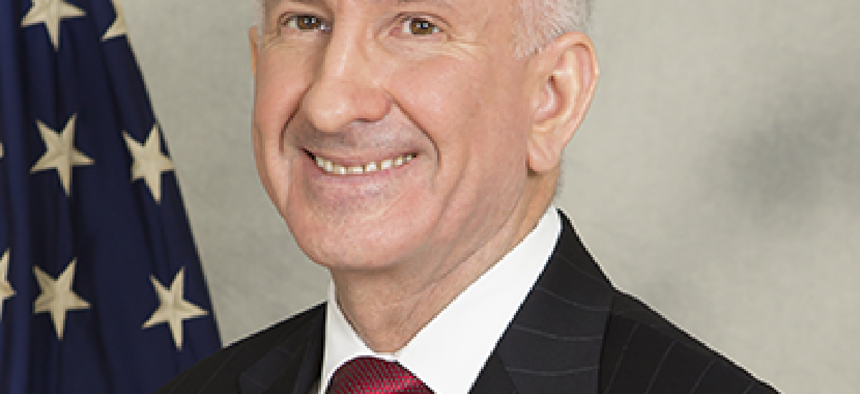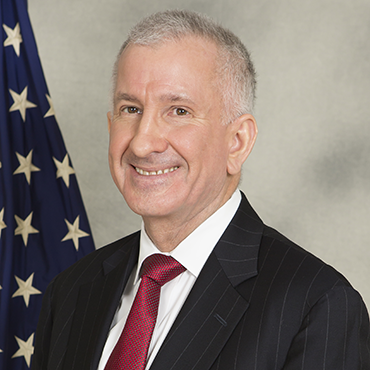Sharpe explains what's in the hallways

The head of the Federal Acquisition Service says “category hallways” will be beacons to federal buyers and suppliers looking for ways to manage the procurement process.

Federal Acquisition Service Commissioner Tom Sharpe says "category hallways" will be beacons to federal buyers and suppliers looking for ways to manage the procurement process.
Two weeks before the General Services Administration launches key pieces of its new common acquisition platform, the agency's Federal Acquisition Service Commissioner Tom Sharpe said the effort is "good government, period."
In an interview with FCW, Sharpe said the agency's first virtual product category hallways set for launch Sept. 30 are the initial flashes of what he expects will emerge as a beacon to federal buyers and federal suppliers looking for ways to manage the complex federal procurement environment.
The first three virtual hallways -- of a possible total of 24 -- to be rolled out under the agency's emerging common acquisition platform will include IT hardware and software along with office supplies.
Sharpe hopes federal buyers will be drawn to the extensive information GSA is working to assemble for the three initial portals, even though some of that information may lead buyers to other non-GSA contracting vehicles.
Aside from being a tactical resource for agencies' buying decisions, Sharpe contends the platform is a strategic move that is the bedrock of responsible government, making things easier and more accessible for agencies overall.
The hallways will aggregate pricing information, as well as agency best practices, whitepapers and Office of Management and Budget guidance. They will also include information and links to other agency contracting vehicles, including Government Wide Acquisition Contracts (GWACs) at NASA, the National Institute of Health and others. OMB's Digital Service and TechFAR, and other IT acquisition rules analysis efforts will be linked as well, Sharpe said.
The agency, which has previously emphasized growing its market share among federal buyers, is betting that those buyers will see GSA as a go-to resource in a confusing acquisition environment and stick with it. "Agencies," Sharpe said, "probably are overwhelmed" with procurement decisions and options.
"There's no one curating all this. They can't find the best, most recent guidance." Sharpe said, adding that his agency is uniquely equipped to provide both.
"Federal customers will come to us because it's attractive. We have to make the case that we're the best answer," he said.
Among the features planned to keep federal buyers on GSA's platform is a laptop computer "decision tree" in the IT hardware hallway. The tool will allow potential laptop customers to hone their requirements by making specific choices about memory, cost and other considerations, helping narrow the decision, said Sharpe.
There's no one curating all this. They can't find the best, most recent guidance.
GSA is also working to provide more detailed pricing information for buyers to compare, a feature offered by no other federal agency, he said.
Despite pushback from industry and others who say collecting information on prices paid can be an onerous and time-consuming process that could yield questionable results, GSA is moving to change its rules on the practice.
It is also moving ahead with efforts to get common descriptions of IT gear, as well as unique identifiers for parts.
Some IT gear makers have said that such efforts are more trouble than the possible benefits warrant, because comparing a vast array of IT gear and parts can't really be done project-to-project.
Sharpe dismissed the idea that such efforts are unworkable, saying that just because the information might be difficult to collect doesn't mean it isn't valuable and the effort shouldn't be made. He's moving ahead, essentially saying the agency has to start somewhere in collecting and collating pricing data to ease federal buyers' acquisition efforts.
The agency has drafted a General Services Administration Acquisition Regulation to allow more flexibility in how prices-paid data can be collected, according to Sharpe. The proposal will be sent to OMB for review and then move into the public comment and rule-making process.
"We have 19,000 suppliers. We need IT tools to keep track of all those products," he said. "But that's not a reason not to pursue it."
"We're all sharp enough to realize we can get close to apples-to-apples comparisons" without exact matches project-to-project, he said.
NEXT STORY: DARPA solicits science to connect the dots


